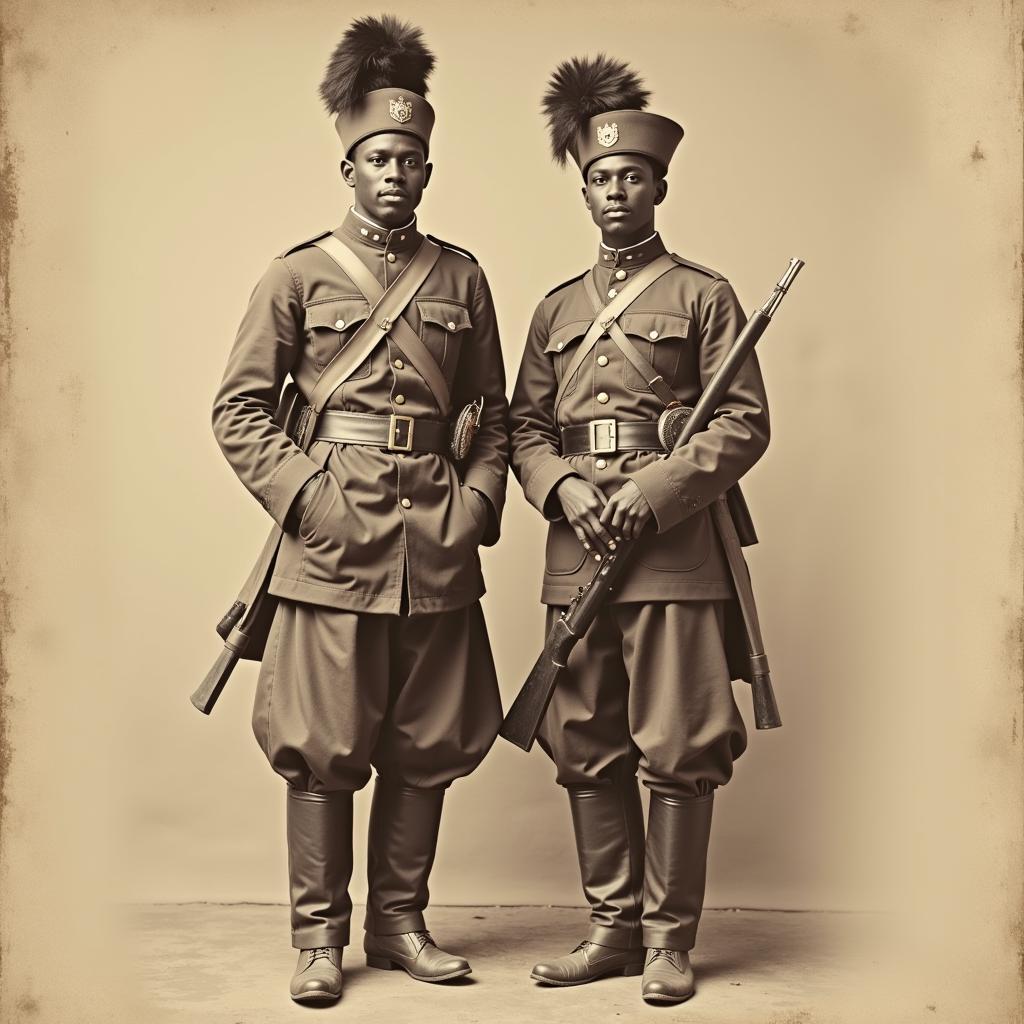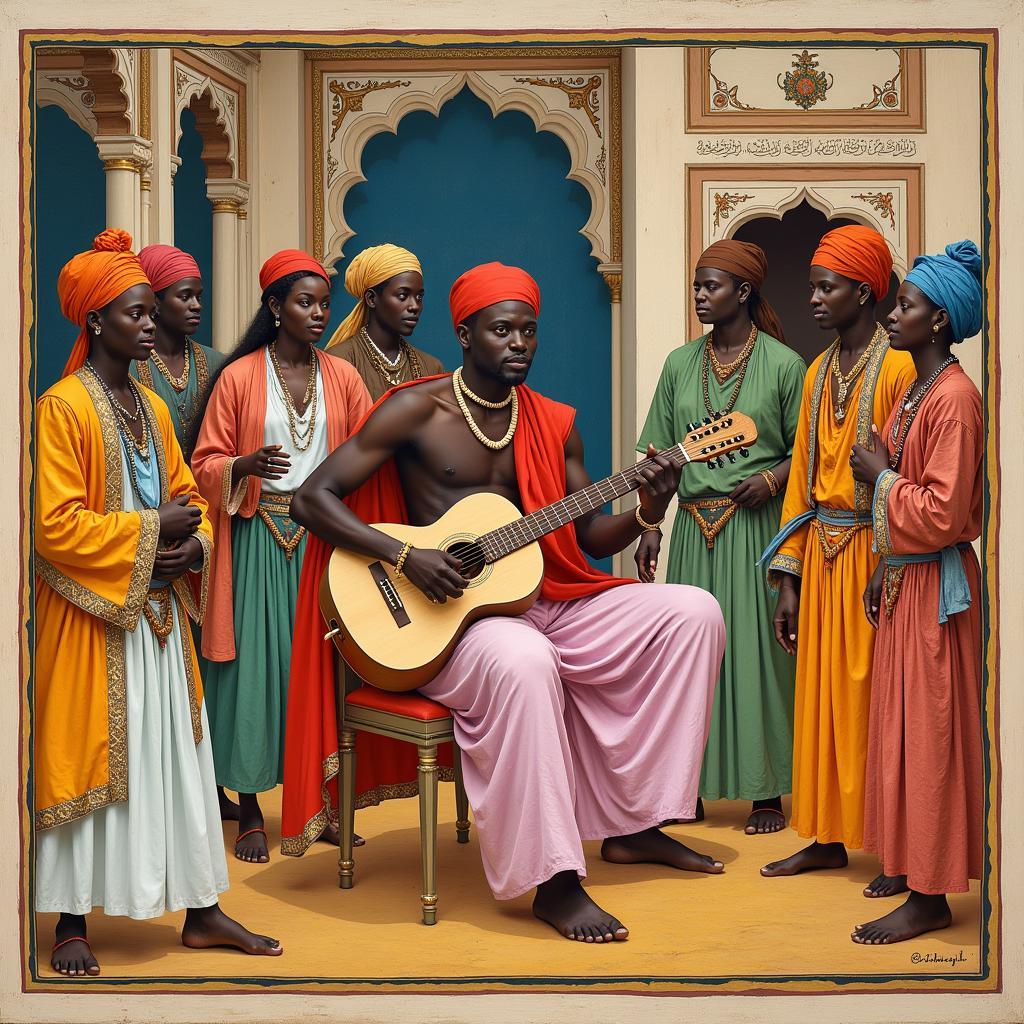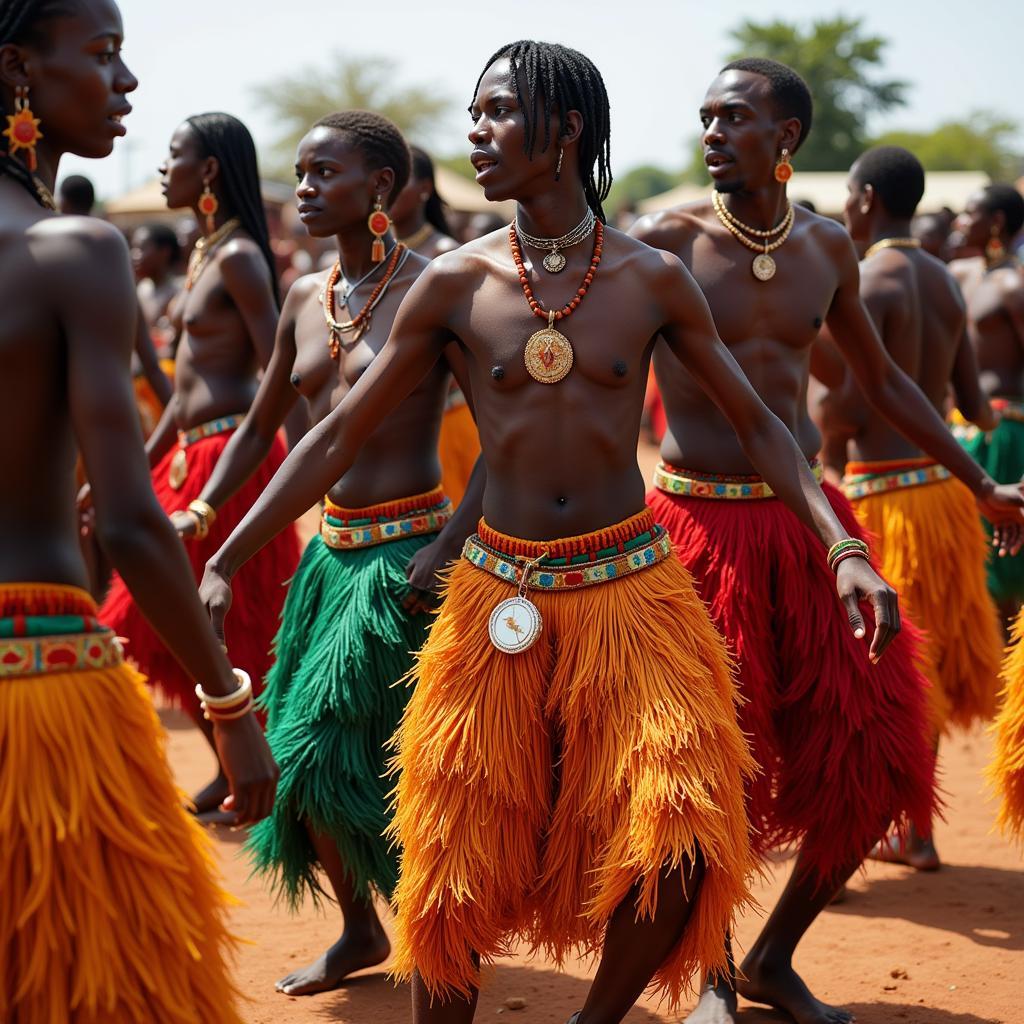The African Diaspora and British India: Untold Connections
The intersection of the African diaspora and British India is a fascinating yet often overlooked aspect of history. Though geographically distant, these two regions became interconnected through the complex web of colonialism, trade, and cultural exchange. This article delves into the intricate relationship between the African diaspora and British India, exploring the historical context, key figures, and lasting influences.
 African Sepoys in British India
African Sepoys in British India
The Arrival of Africans in India: From Soldiers to Slaves
The presence of Africans in India can be traced back to the early centuries CE, with evidence suggesting their arrival as traders and mercenaries. However, the British colonial enterprise from the 17th century onwards marked a significant turning point. The East India Company, a powerful trading corporation, recruited soldiers for its growing army from various parts of Africa, particularly from East Africa. These soldiers, known as “Habshis” or “Siddis,” played a crucial role in establishing British dominance.
Beyond soldiers, Africans also arrived in India as slaves, brought by Arab and European traders. Primarily concentrated in port cities and urban centers, these enslaved Africans served in various capacities, from domestic labor to skilled artisans. Their presence added to the already diverse social fabric of India.
 African Musician in Mughal Court
African Musician in Mughal Court
African Influence in Indian Courts and Culture
Despite their often marginalized status, Africans in India rose to prominence in various spheres. The Mughal Empire, for instance, witnessed the rise of powerful African courtiers and military commanders. Malik Ambar, an Ethiopian slave who rose to become the regent of the Ahmadnagar Sultanate, is a prime example. His military prowess and administrative acumen left a lasting impact on the Deccan region.
African influences seeped into Indian culture, particularly in music and dance. The Siddi community in Gujarat, descended from African ancestors, are renowned for their vibrant musical traditions. Their energetic dances and rhythmic drumming, often performed during religious festivals, showcase a unique blend of African and Indian elements.
Resistance and Rebellion: Challenging Colonial Rule
The shared experience of oppression under British colonialism fostered a sense of solidarity between Africans and Indians. Africans actively participated in various uprisings against British rule. During the Indian Rebellion of 1857, also known as the Sepoy Mutiny, African soldiers fought alongside their Indian counterparts against the British.
Legacies and Lasting Impressions
The intertwined history of the African diaspora and British India continues to shape contemporary societies. From the Siddi community in Gujarat preserving their unique cultural heritage to the historical accounts documenting the lives of influential Africans in India, the legacy of this interaction is undeniable.
FAQs
1. What is the significance of the term “Habshi” in the context of British India?
“Habshi” was a term used to refer to people of African descent, particularly those from the Horn of Africa. In British India, it was often used to denote African soldiers serving in the East India Company’s army.
2. Did Africans face similar forms of discrimination as Indians under British rule?
While the experiences of Africans and Indians under British colonialism were not identical, both groups faced various forms of racial discrimination and prejudice. This included restrictions on social mobility, economic opportunities, and political participation.
3. Are there any prominent architectural remnants showcasing African influence in India?
Yes, several architectural structures in India bear testament to African influence. For instance, the Sidi Saiyyed Mosque in Ahmedabad, Gujarat, is renowned for its intricate jali work, a style often attributed to African craftsmen.
4. What are some recommended resources for further exploration of this topic?
Several books and scholarly articles delve deeper into the history of the African diaspora in India. “African Elites in India” edited by Kenneth X. Robbins and John McLeod, and “The African Diaspora in India: A History” by Shihan de Silva Jayasuriya are excellent starting points.
Conclusion
The intersection of the African diaspora and British India reveals a complex and often overlooked chapter of history. From soldiers and slaves to courtiers and cultural icons, Africans have left an indelible mark on the Indian subcontinent. Recognizing and understanding this interconnected past is essential for appreciating the multicultural tapestry of both regions and challenging Eurocentric narratives of history.


